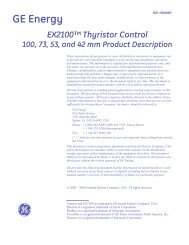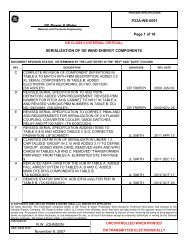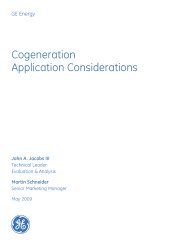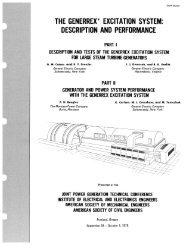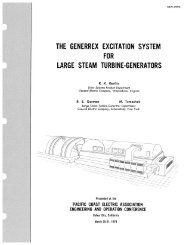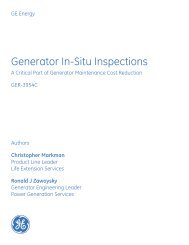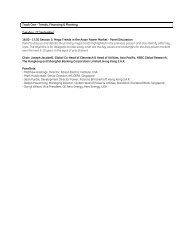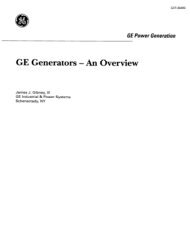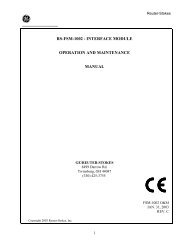GER 3568G - Dry Low NOx Combustion Systems for ... - GE Energy
GER 3568G - Dry Low NOx Combustion Systems for ... - GE Energy
GER 3568G - Dry Low NOx Combustion Systems for ... - GE Energy
You also want an ePaper? Increase the reach of your titles
YUMPU automatically turns print PDFs into web optimized ePapers that Google loves.
<strong>Dry</strong> <strong>Low</strong> NO x <strong>Combustion</strong> <strong>Systems</strong> <strong>for</strong> <strong>GE</strong> Heavy-Duty Gas Turbines<br />
has increased, design and development ef<strong>for</strong>ts<br />
have moved towards hardware durability and<br />
extending combustor inspection intervals.<br />
Design of a successful DLN combustor <strong>for</strong> a<br />
heavy-duty gas turbine also requires the designer<br />
to develop hardware features and operational<br />
methods that simultaneously allow the<br />
equivalence ratio and residence time in the<br />
flame zone to be low enough to achieve low<br />
<strong>NOx</strong>, but with acceptable levels of combustion<br />
noise (dynamics), stability at part-load operation<br />
and sufficient residence time <strong>for</strong> CO burnout,<br />
hence the designation of DLN combustion<br />
design as a “four-sided box” (See Figure 4).<br />
A scientific and engineering development program<br />
by <strong>GE</strong>’s Corporate Research and<br />
Development, Power <strong>Systems</strong> business and<br />
Aircraft Engine business has focused on understanding<br />
and controlling dynamics in lean premixed<br />
flows. The objectives have been to:<br />
■ Gather and analyze machine and laboratory<br />
data to create a comprehensive<br />
dynamics data base<br />
■ Create analytical models of gas turbine<br />
combustion systems that can be used to<br />
understand dynamics behavior<br />
■ Use the analytical models and experimental<br />
methods to develop methods to<br />
control dynamics<br />
Dynamics<br />
Turndown<br />
<strong>NOx</strong><br />
CO<br />
GT23812B<br />
These ef<strong>for</strong>ts have resulted in a large number of<br />
hardware and control features that limit dynamics,<br />
plus analytical tools that are used to predict<br />
system behavior. The latter are particularly useful<br />
in correlating laboratory test data from full<br />
scale combustors with actual gas turbine data.<br />
DLN-1 System<br />
DLN-1 development began in the 1970s with<br />
the goal of producing a dry oil system to meet<br />
the United States Environmental Protection<br />
Agency’s New Source Per<strong>for</strong>mance Standards<br />
of 75 ppmvd NO x at 15% O 2 . As noted in<br />
Reference 7, this system was tested on both oil<br />
and gas fuel at Houston Lighting & Power in<br />
1980 and met its emission goals. Subsequent to<br />
this, DLN program goals changed in response<br />
to stricter environmental regulations and the<br />
pace of the program accelerated in the late<br />
1980s.<br />
DLN-1 Combustor<br />
The <strong>GE</strong> DLN-1 combustor (shown in cross section<br />
in Figure 5 and described in Reference 8) is a<br />
two-stage premixed combustor designed <strong>for</strong> use<br />
with natural gas fuel and capable of operation<br />
on liquid fuel. As shown, the combustion system<br />
includes four major components: fuel injection<br />
system, liner, venturi and cap/centerbody<br />
assembly.<br />
Figure 4. DLN technology - a four sided box Figure 5. <strong>Dry</strong> <strong>Low</strong> NO x combustor<br />
<strong>GE</strong> Power <strong>Systems</strong> ■ <strong><strong>GE</strong>R</strong>-<strong>3568G</strong> ■ (10/00) 3



